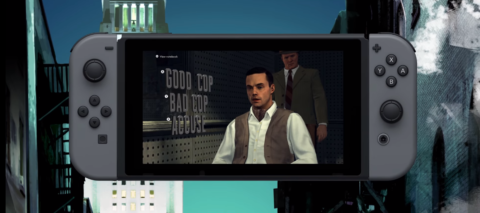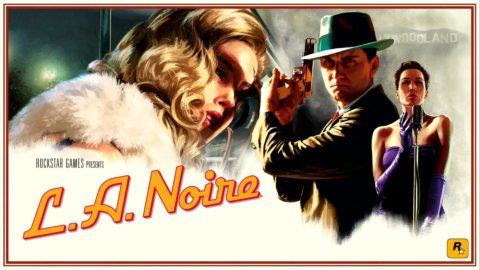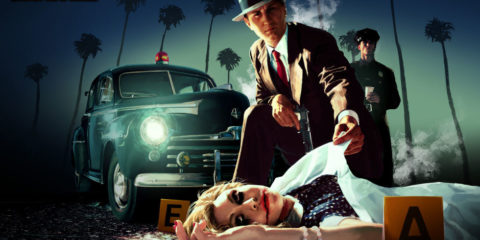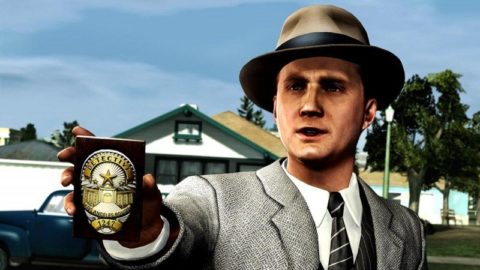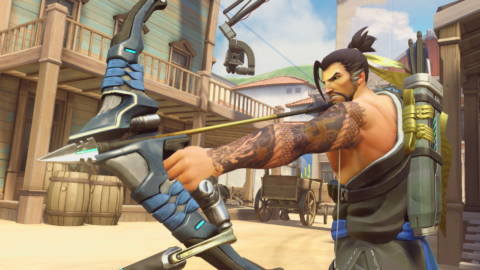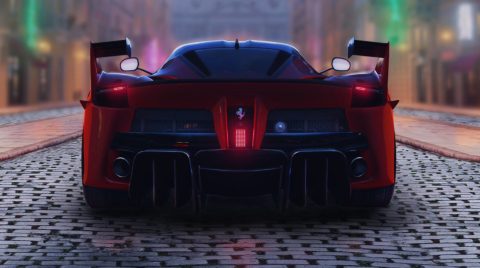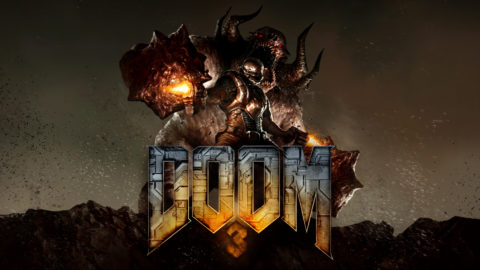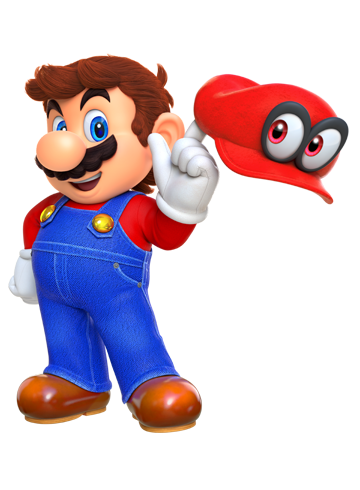
L.A. Noire is one of the unique open-world games of the PS3/Xbox 360 era. Its focus was not on combat, filling in a large map, or upgrading your character through a skill-tree. L.A. Noire told deep stories through facial animations, meaningful environments, and the small clues you could discover in a large, authentic recreation of 1940s Los Angeles. There has not been an open-world game, or a detective game, of this caliber since its original release in 2011. L.A. Noire has been remastered for the new generation of consoles, including the Nintendo Switch. There are some games that at first glance don’t seem like a good fit for Nintendo’s hybrid console, but L.A. Noire proves that with the right amount of attention to detail almost anything can be right at home on the Switch.
From Humble and Traumatic Beginnings
You play as Cole Phelps, an idealistic member of the LAPD who is silently haunted by his traumatic experiences fighting the Japanese in WW2. Unlike his partners, Cole is somewhat of an overachiever. He wants to find the truth and attempts to see the good in people no matter what. These idealistic characteristics, his modesty, and war record lead him from being a lowly beat Patrol Officer to a Detective investigating cases in traffic, homicide, vice, and arson. These cases are inspired by real-life events and the authentic recreation of 1940s Los Angeles enhances the feeling of realism. Despite all the glamour and beautiful vistas, Los Angeles is full of corrupt, evil crime and it’s up to Detective Cole Phelps to uncover the truth.
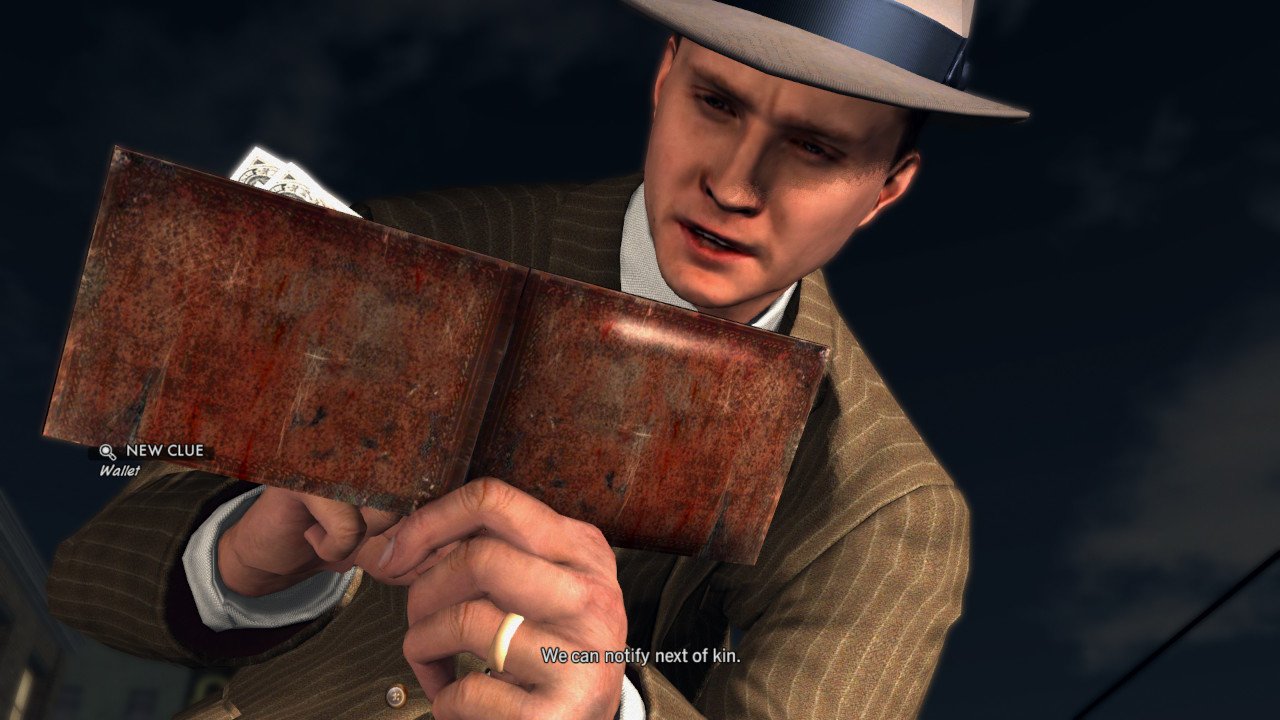
1940s Los Angeles Has Never Looked Better
One of the most impressive features of L.A. Noire is its faithful recreation of 1940s Los Angeles. Team Bondi spent a lot of time researching the history of the area, getting landmarks, cars, and street signs all correctly. L.A. Noire’s open world truly serves as a portal to the past. As far as open world games go, however, this one doesn’t have a lot you can do in it. It goes without saying that L.A. Noire is not your typical open-world game, but it would have been nice to have a few more activities or ways to interact with the NPCs instead of the scripted main cases and street crimes. There’s not much to do when you’re not investigating a case other than to enjoy the sights and ride classic cars.
L.A. Noire is 6 years old now, and it’s starting to show its age. Textures don’t look as nice, Cole’s movements are sometimes unnatural, and details pop in as you approach them. If there’s one thing that looks great after all these years, it’s L.A. Noire’s use of MotionScan technology. MotionScan was Team Bondi’s “revolutionary” technology for motion capturing every detail of an actor’s facial performance. This allows the player to feel like they’re truly interrogating someone by having them analyze their facial movements for nervous ticks or a potential lie. I was honestly shocked by how good it still looks, and I believe it rivals some of the motion capture technology used in games today. The facial performances of some characters definitely do help create a sense of realism when interrogating them, but like in real life, some of them have better poker faces than others.
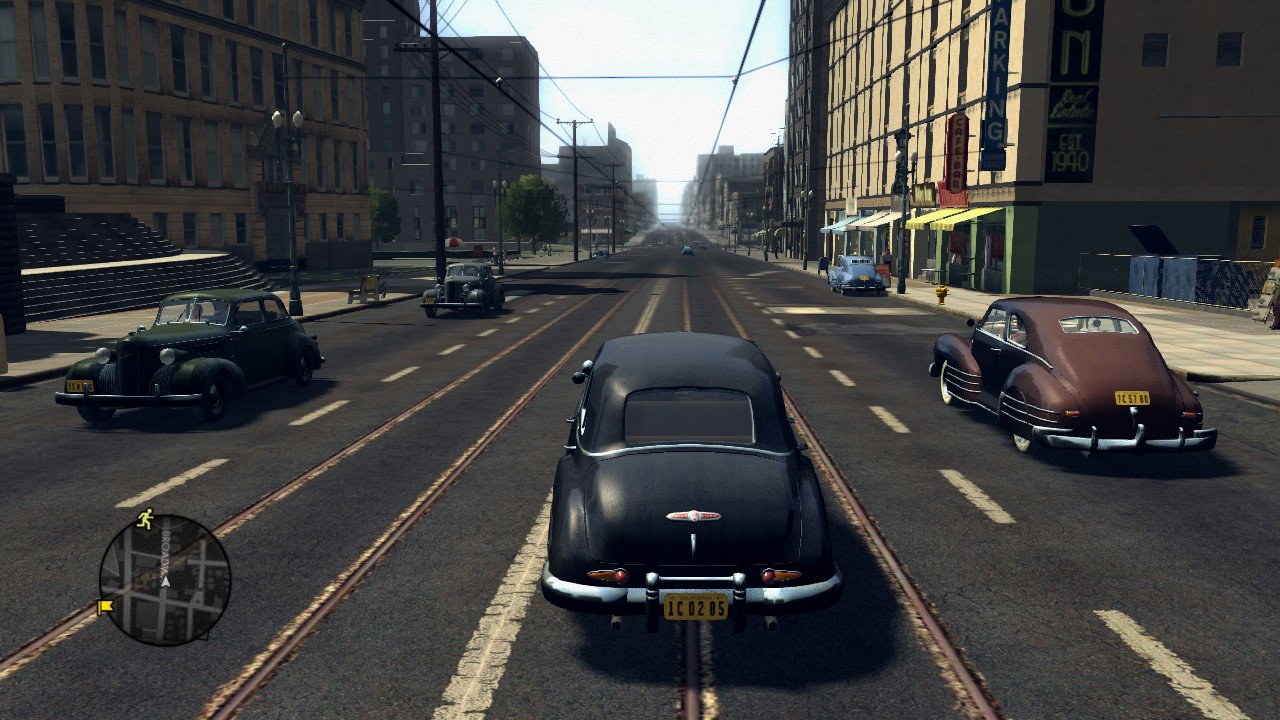
L.A. Noire on Nintendo Switch runs at a solid 30 FPS in both docked and handheld. Docked is rendered at 1080p, while handheld is at 720p. The game runs great and looks great in both modes. I remember playing the game on PlayStation 3 and being blown away by the lighting, facial capture, and character models. While it’s not as impressive today when compared to newer games, it’s still an incredible feat when considering the size and portable aspect of the Nintendo Switch. It’s not perfect though, with the game being extremely dark no matter how much you raise the brightness, a low draw-distance that can be glaringly obvious when driving during the day, and a few frame rate drops when exiting buildings. Regardless of these issues, I had no idea this game would be something I could lose myself in when playing on-the-go.
Speaking of the portability aspect of L.A. Noire on Switch, Rockstar Games has made efforts to use the Switch’s unique methods of control. You have the option to control Detective Cole Phelps through touch. You can tap on the ground to direct Cole on where to walk, you can pick up clues and manipulate objects by touching on them, and you can go through menus with your finger. L.A. Noire also features motion controls that let you change the camera and manipulate objects with your hand as if you were rotating them. These are not ideal ways to play the game, but they are convenient features to have for when you want to play the game in a new way.
Critical Thinking (and some luck) Is the Key to Success!
Cases are made up of investigative work, interrogations, and action scenes. Investigative work has you searching an area for clues, solving puzzles for more information, or referring to your notebook to connect the pieces. Interrogations have you asking a person questions and then deciding whether what they’re saying is the truth. The original version of L.A. Noire used ‘Truth,’ ‘Doubt,’ and ‘Lie,’ as the options to choose from when interrogating someone. This new version has changed these prompts to ‘Good Cop,’ ‘Bad Cop,’ and ‘Accuse.’ One of the problems with the original game was that those prompts weren’t always clear and could get you in trouble in an investigation. The new prompts help the player understand how Cole is more likely to react, but I still found myself selecting the wrong choice in a difficult interrogation. Action scenes are made up of car chases, on-foot chases, shootouts, and even fist fights. These scenes can be the most fun and the most frustrating parts of the game. It’s fun to chase down a speeding criminal with the sirens blaring and trying to cut them off before they escape. It’s frustrating to chase a criminal on foot when Cole moves clunky and rigidly, leading to moments where you get stuck and have to retry. All in all, L.A. Noire makes it fun to be a detective. At times you truly have to think critically and go through the clues and evidence you collected to make the right accusations and uncover the truth. It’s a rewarding experience and I wish there were more games like this.
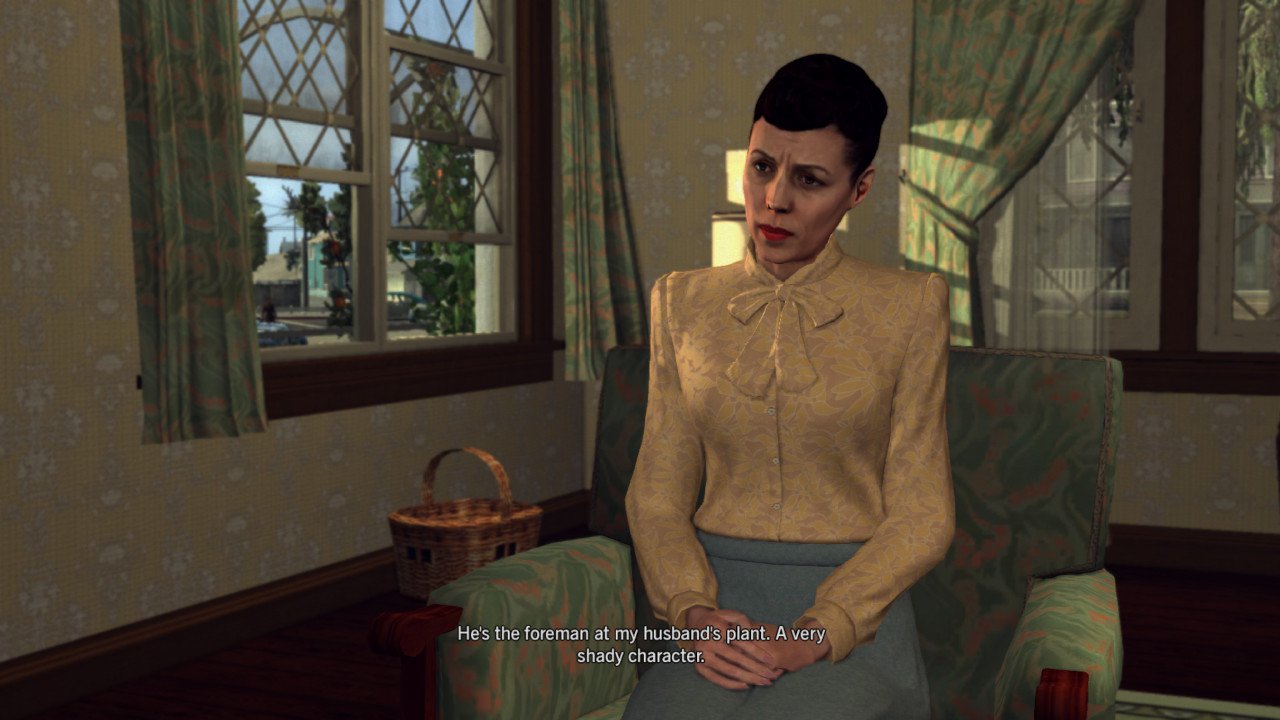
L.A. Noire features cases in traffic, homicide, vice, and arson. These cases are made up of the same mechanics/sequences I mentioned above, but they take you to different areas and have significantly different themes. Homicide cases are the most graphic, having you looking over bodies of dead people and blood splattered crime scenes for clues. Vice leads you to clubs and movie sets as you investigate corruption in Hollywoodland. Some cases are more interesting than others, but for the most part, each case is worth your time.
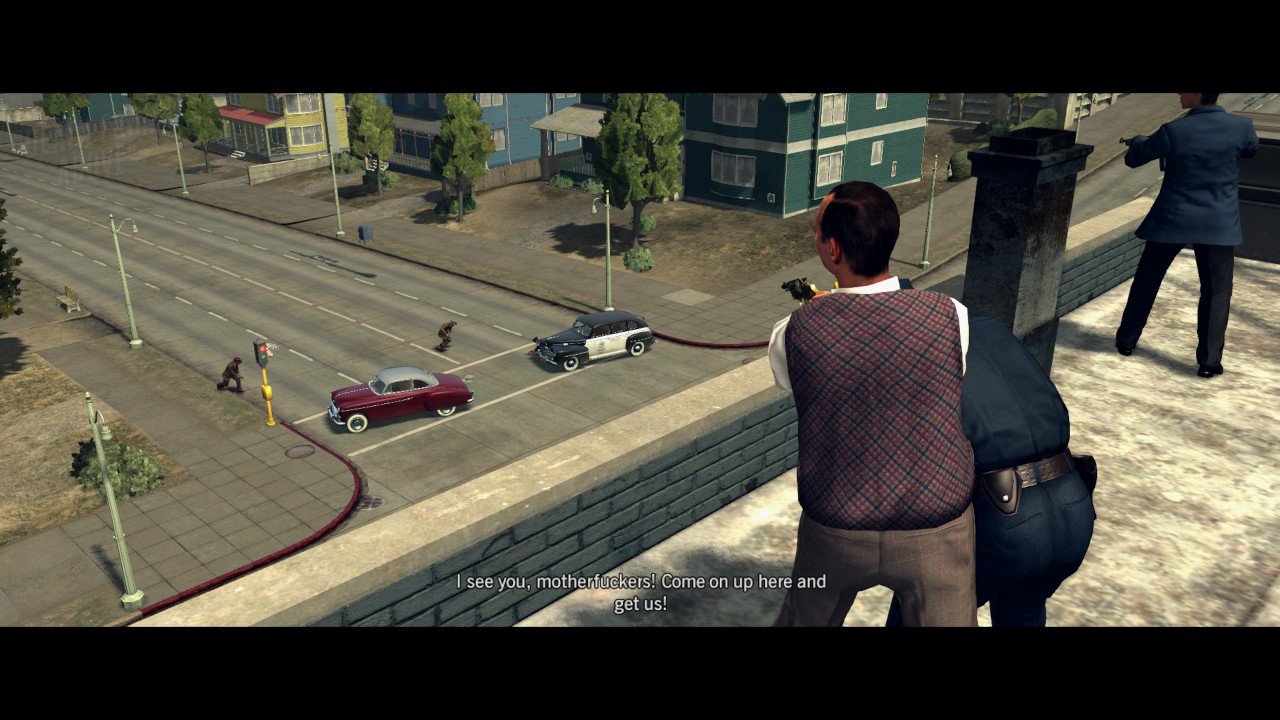
L.A. Noire features 20+ cases and includes DLC and preorder cases that were not in the original standard version of the game. Each case can take you from an hour to two hours to complete, depending on how great your detective skills are. There’s plenty of content in the main game, but once you’ve finished it there isn’t much of a reason to go back unless you want to get everything 100% right. There are plenty of collectibles for those who enjoy them: you can collect classics cars, discover historic landmarks, read special side-story newspapers, unlock new detective suits, and a few more activities. L.A. Noire is a complete game with hours of content to enjoy.
Final Thoughts
L.A. Noire offers a faithful recreation of 1940s Los Angeles to create a truly original open-world playground, further enhanced by a thrilling look into the not so black-and-white investigative process of the post-WW2 LAPD. L.A. Noire was one of my favorite games of the PlayStation 3 era and I’m happy to have another mature title on the Nintendo Switch. It has its quirks and it has its flaws, but I love the game nonetheless and truly recommend it to anyone who is interested in an original open-world experience. L.A. Noire is available at retail for $59.99 and on the Nintendo eShop for $49.99.
Review Copy Provided by Rockstar Games
